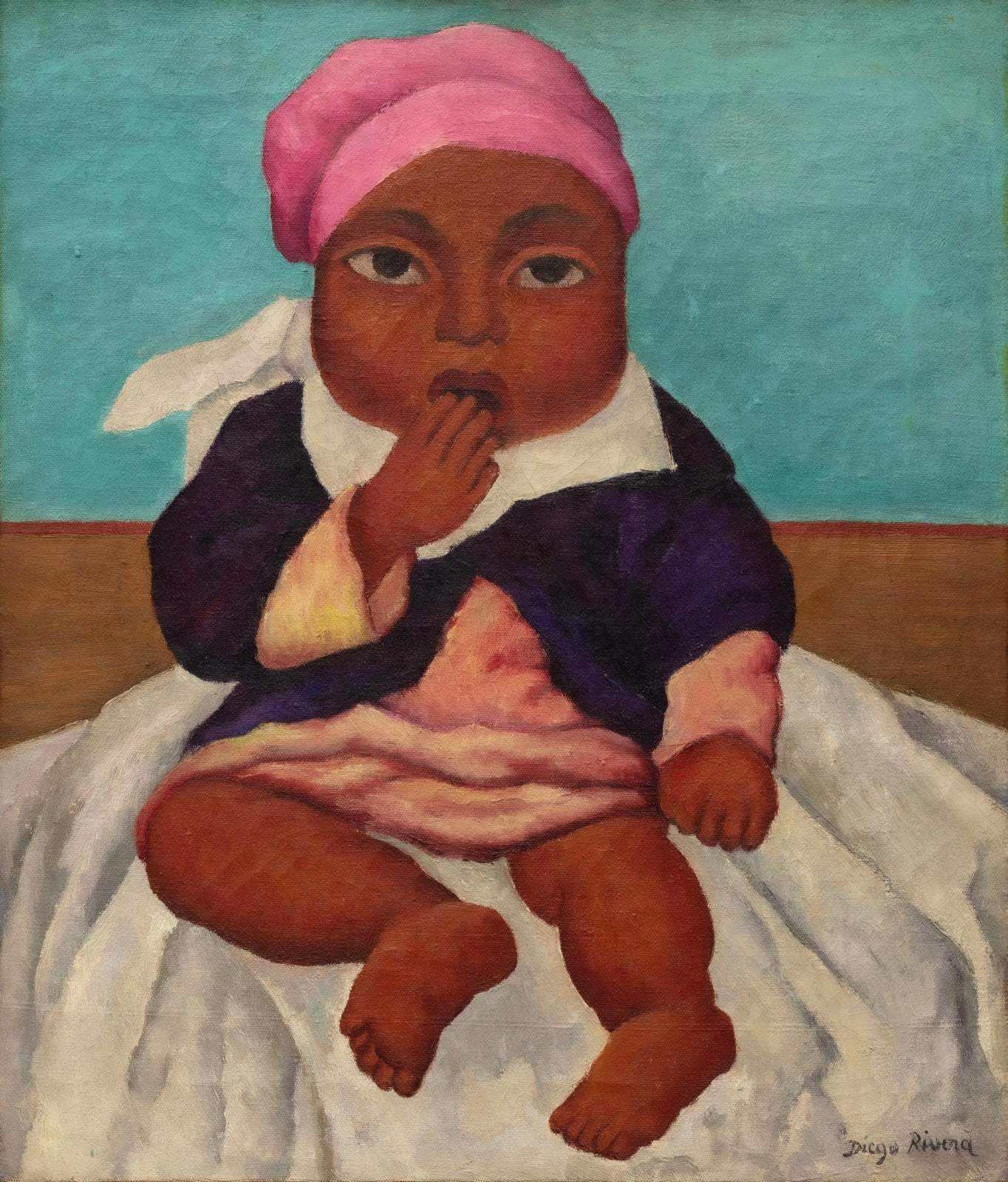Diego Rivera
55 x 47 cm
In the 1920s, following a violent civil war known as the Mexican Revolution (1910–20) that not only destroyed lives and the economy, but scattered artists and discouraged tourism, Mexico enjoyed an unequaled cultural renaissance, partly sponsored by the new revolutionary government, that would have a powerful impact across the hemisphere, from Buenos Aires to New York. In the visual arts, this was a time of stylistic, thematic, and political complexity, marked by personal rivalries and warring factions and nurtured by a rich and interdisciplinary critical apparatus, that resulted in innovation across media—from traditional woodcuts and frescoes to the modernist deployment of photomontage and the airbrush…
Niño (Mexican Baby) was acquired by the Weyhe Gallery in New York City around 1930, at the height of U.S. interest in Mexican art…The Weyhe Gallery was seeking to build up its stock prior to the opening of Rivera’s retrospective at the Museum of Modern Art, New York, which opened in late December 1931. The catalogue to that exhibition credits seventeen works to the Weyhe Gallery (or Erhard Weyhe, personally): five mural studies; four other works on paper; and eight paintings, including The Aqueduct (1918), Forest, Tehuantepec (1930), Palms, Tehuantepec (1930), and five portraits of children (Mexican Baby, Portrait of a Child, Seated Child with Shawl, Standing Child, and The Shawl), all but one dated on the checklist to 1931…Niño was among the five portraits of children that Weyhe lent to the MoMA show; it was also included in Rivera’s massive retrospective in 1949, held at Mexico City’s Palacio de Bellas Artes…
Niño belongs to a group of at least seventy portraits of Mexican children, seen alone or in pairs, sometimes accompanied by their mothers or other older women, that Rivera completed over his long career, beginning in 1925. [1] In the works of the late 1920s and early 1930s, the subjects stand or sit on the floor of his studio, sometimes on straw mats or petates, often wearing traditional clothing. Rivera frequently used the same models—usually the young daughters of his household staff—and only occasionally included captions or titles identifying the specific sitter. These are less portraits than “types,” working class children from Indigenous or mestizo backgrounds who represent the future beneficiaries of the Revolution. None of Rivera’s children smile, their solemnity perhaps underscoring the difficulty of the worker’s life to which they were born...These works were in great demand at the time: Marion Koogler McNay, Abby Aldrich Rockefeller, Galka Scheyer, Carl Van Vechten, and Edward M. M. Warburg are among the leading collectors who acquired such portraits.
— Edited excerpt from James Oles, "Four Mexican Paintings from the Weyhe Gallery: A Ballad of Rediscovery," New York: Schoelkopf Gallery, 2024
[1] See James Oles, “From Murals to Paintings: Mothers and Children,” in Diego Rivera’s America, pp. 78–95.
Provenance
The artist; to
Private collection, circa 1931; by descent to
Private collection, New York, 1972;
By descent to the present owner
Exhibitions
The Museum of Modern Art, New York, Diego Rivera, December 23, 1931–January 27, 1932, no. 55, as 1931
Instituto Nacional de Bellas Artes, Mexico City, Diego Rivera: 50 años de su labor artística, 1949
Literature
Frances Flynn Paine and Jere Abbott, Diego Rivera, New York: The Museum of Modern Art, 1931, p. 54, no. 55Diego Rivera: 50 años de su labor artística, Mexico City: Instituto Nacional de Bellas Artes, 1951, as 1929
“Los niños pintados por Diego Rivera,” Artes de México, no. 27, 1959, p. 25, as Niño con gorro (Boy with Cap)
Laura Cortés Gutiérrez, Diego Rivera: catálogo general de obra de caballete, Mexico City: Consejo Nacional para la Cultura y las Artes, 1988, p. 117, no. 875, illus.Subscribe to our mailing list to receive updates from the gallery
* denotes required fields
We will process the personal data you have supplied in accordance with our privacy policy (available on request). You can unsubscribe or change your preferences at any time by clicking the link in our emails.

